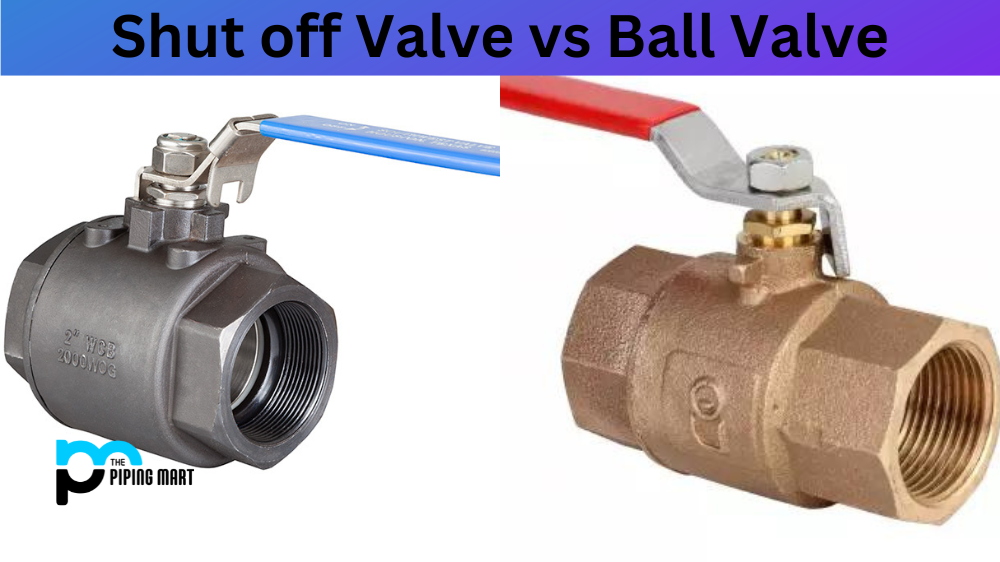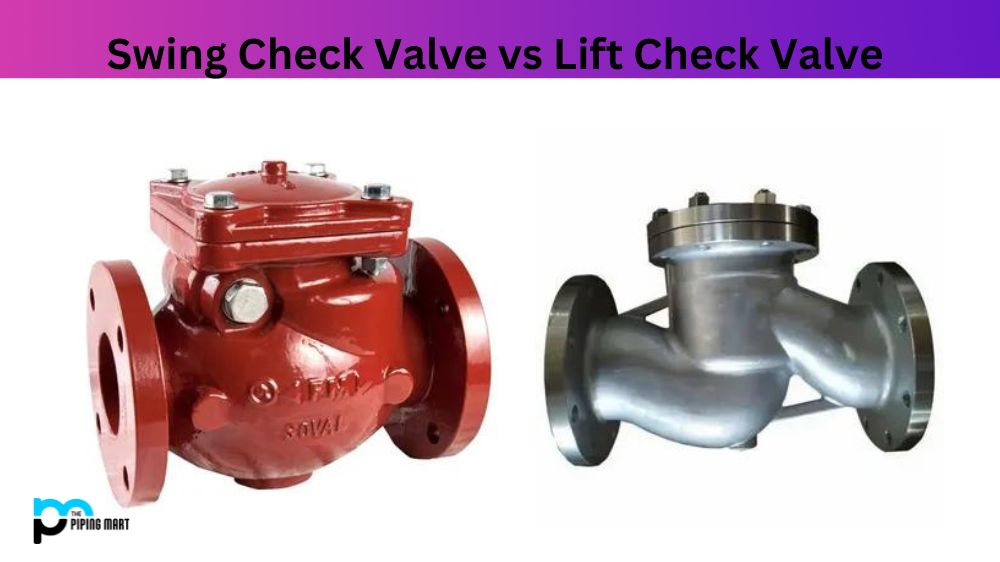When dealing with plumbing and piping problems, the terms shut-off valve and ball valve are often used interchangeably. However, contrary to popular belief, these two valves have different functions and are not interchangeable. Understanding the difference between these two types of valves is crucial for preventing major plumbing issues and ensuring efficient operation. This article will discuss the differences between a shut-off and a ball valve, their functions, and how to choose the correct valves for your plumbing needs.
What is Shut Off Valve?
Shut-off valves control the flow of water, gas, or other liquids in a piping system. They are devices that regulate or block fluid flow by operating a gate or a wedge based on the movement of a spindle or lever. They are typically found near fixtures like toilets, sinks, and appliances that must be serviced or maintained. Shut-off valves are primarily used to perform maintenance or repairs on the piping system, such as replacing a faucet or fixing a leak. They are unsuitable for permanent fixtures because they can fail or become stuck after extended periods. A common type of shut-off valve is the compression valve, which is easy to install and affordable.
What is Ball Valve?
A ball valve is a shut-off valve with a round ball inside the valve body and a lever or knob to operate it. The ball inside the valve has a hole in the middle that lines up with the pipe to allow flow when the valve opens. When closed, the ball rotates 90 degrees within the valve body, blocking flow entirely. Ball valves are typically used in high-pressure systems as they can withstand higher pressure and are more durable than shut-off valves. They are commonly found in industrial settings, such as oil and gas pipelines and fire protection systems. Ball valves come in different materials, including brass, stainless steel, and PVC, and are suitable for residential and commercial use.
Difference Between Shut off Valve and Ball Valve
Uses
When choosing between a shut-off valve and a ball valve for your plumbing needs, consider the type and location of the system, the pressure and temperature requirements, and your budget. Shut-off valves are ideal for residential use for minor repairs or maintenance, whereas ball valves are more suited for high-pressure systems with more significant repairs. Ball valves are more expensive than shut-off valves, but they offer more excellent durability and efficiency, which can lead to long-term cost savings.
Operation
One of the significant differences between shut-off valves and ball valves is the ease of operation. While shut-off valves require multiple turns, ball valves require only a quarter-turn to open or close the valve. This means that ball valves can be operated faster and with less effort, which makes them more convenient for use in industrial settings or systems with high demand.
Maintenance
Finally, it is worth mentioning that shut-off and ball valves require maintenance to remain in good working condition. Regular cleaning and lubrication can prevent leaks and prolong the life of the valves. If you are uncomfortable performing maintenance, it is best to hire a licensed plumber to ensure your valves are working correctly.
Other Differences
- A shut-off valve is a valve that is used to stop the flow of water or other fluid through a pipe.
- A ball valve is a valve that is used to control the flow of water or other fluid through a pipe.
- Shut-off valves are typically used to stop water flow to a specific area, such as a sink or toilet.
- Ball valves, such as a sprinkler system, are typically used to control water flow to a specific area.
- Shut-off valves are usually installed at the main water supply for a home or business.
- Ball valves are usually installed at the point of use, such as at a hose bib or sprinkler head.
- Shut-off valves are typically made of brass, bronze, or stainless steel.
- Ball valves are typically made of plastic, brass, or stainless steel.
Conclusion
In summary, the shut-off valve and the ball valve are two different types of valves with other functions. Shut-off valves are primarily used for minor repairs and maintenance in residential settings, while ball valves are more suitable for high-pressure systems in industrial environments. When selecting these two valves, consider the system type, pressure and temperature requirements, budget, and ease of operation. Regular maintenance is essential for both valves to ensure they remain in good working order. This article has helped to clarify the differences between a shut-off valve and a ball valve and how to choose the right one for your plumbing needs.




